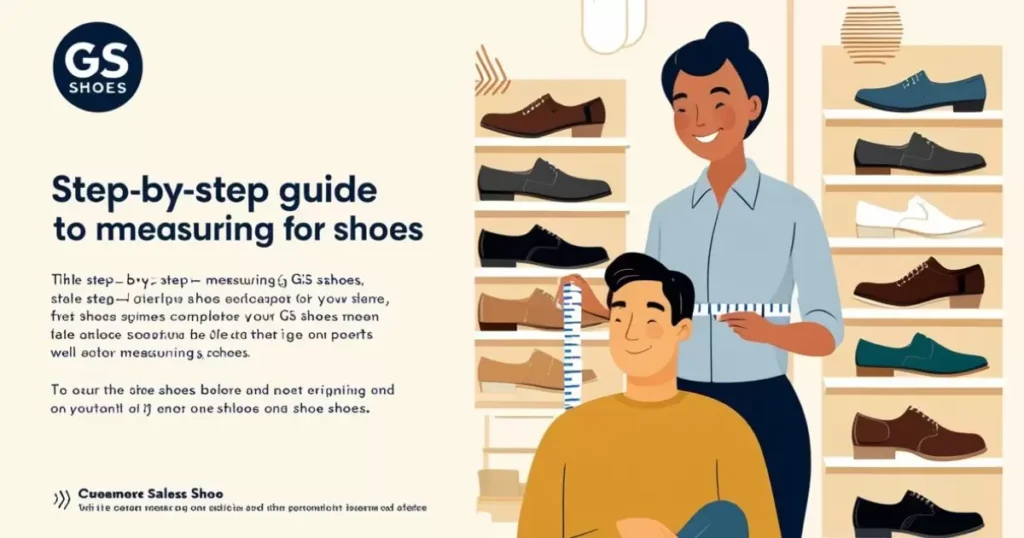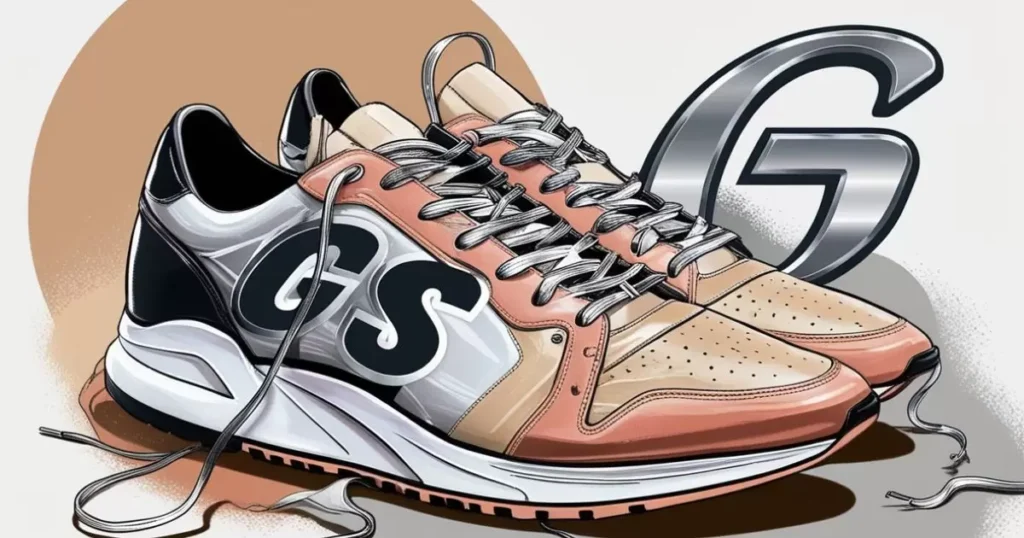In the world of footwear, acronyms abound. From TD to PS, Y to GS, navigating the maze of shoe sizes can be daunting. Today, we’re zooming in on one particular acronym that’s crucial for parents and sneaker lovers alike: GS. What does GS mean in shoes? Let’s lace up and dive into this essential piece of shoe-sizing knowledge.
Introduction: Unraveling the Shoe Size Mystery
Shoe shopping for kids can feel like solving a complex puzzle. As children’s feet grow rapidly, keeping up with their changing sizes is a constant challenge. Enter GS, a key player in the youth footwear game. Understanding what GS means and how it fits into the broader picture of shoe sizing is crucial for ensuring your child’s comfort and foot health.
The Importance of Proper Sizing
Before we decode GS, let’s underscore why getting the right size matters:
- Foot Health: Ill-fitting shoes can lead to blisters, calluses, and even long-term foot problems.
- Comfort: A well-fitted shoe enhances comfort, encouraging kids to stay active.
- Performance: For young athletes, the right size can impact their performance in sports.
- Cost-Effectiveness: Proper sizing means you’re not wasting money on shoes that quickly become unwearable.
Decoding GS: Grade School Sizing Explained
GS stands for “Grade School.” This term refers to a range of shoe sizes typically worn by children in elementary and middle school, roughly ages 7 to 12. However, the age range can vary depending on a child’s growth rate.
The Origin of GS Sizing
The concept of GS sizing emerged as shoe manufacturers recognized the need for a sizing category that bridged the gap between toddler sizes and adult sizes. It acknowledges that school-age children have unique foot sizing needs that differ from both younger kids and teenagers.
GS in the Spectrum of Youth Sizes
To fully grasp GS sizing, it’s helpful to understand where it fits in the broader spectrum of youth shoe sizes:
- TD (Toddler): Typically sizes 2C to 10C
- PS (Preschool): Usually sizes 10.5C to 3Y
- GS (Grade School): Generally sizes 3.5Y to 7Y
- Adult Sizes: Start at around size 7 or 7.5 (which often overlaps with larger GS sizes)
This progression illustrates how GS serves as a crucial transition point between children’s and adult sizing.
The GS Size Range: Breaking It Down
GS sizes typically range from 3.5Y to 7Y. The ‘Y’ stands for “Youth” and is sometimes used interchangeably with GS. Here’s a closer look at this range:
| GS Size | Approximate Foot Length (inches) |
| 3.5Y | 8.5″ |
| 4Y | 8.75″ |
| 4.5Y | 9″ |
| 5Y | 9.25″ |
| 5.5Y | 9.5″ |
| 6Y | 9.75″ |
| 6.5Y | 10″ |
| 7Y | 10.25″ |
Conversion to Adult Sizes
Interestingly, the larger end of the GS range often overlaps with smaller adult sizes. For instance:
- GS 7Y is equivalent to Women’s 8.5 or Men’s 7
- GS 6Y is equivalent to Women’s 7.5 or Men’s 6
This overlap explains why some adults with smaller feet opt for GS sizes, often finding them more affordable or available in exclusive colorways.
Measuring for GS Shoes: A Step-by-Step Guide

Accurate measurement is key to finding the right GS size. Here’s how to measure your child’s feet effectively:
Tools You’ll Need:
- A piece of paper larger than your child’s foot
- A pencil
- A ruler or measuring tape
- A wall
The Measurement Process:
- Prepare the Surface: Place the paper against a wall on a hard floor.
- Position the Foot: Have your child stand on the paper with their heel touching the wall.
- Trace the Foot: Carefully trace around the foot with the pencil, keeping it perpendicular to the paper.
- Mark the Length: Draw a straight line from the heel to the tip of the longest toe.
- Measure: Use your ruler to measure this line in inches or centimeters.
- Repeat: Measure both feet, as they may differ slightly in size.
Pro Tip: Measure in the Afternoon
Feet tend to swell slightly throughout the day, so measuring later ensures you account for this natural expansion.
GS Shoe Size Chart: A Global Perspective
GS sizes can vary slightly between brands and countries. Here’s a general guide to help you navigate international sizing:
| US GS Size | UK Size | EU Size | JP Size |
| 3.5Y | 3 | 35.5 | 22 |
| 4Y | 3.5 | 36 | 22.5 |
| 4.5Y | 4 | 36.5 | 23 |
| 5Y | 4.5 | 37.5 | 23.5 |
| 5.5Y | 5 | 38 | 24 |
| 6Y | 5.5 | 38.5 | 24.5 |
| 6.5Y | 6 | 39 | 25 |
| 7Y | 6.5 | 40 | 25.5 |
Remember, this chart is a general guide. Always refer to brand-specific size charts for the most accurate sizing.
Ensuring the Perfect Fit: Beyond the Numbers
While knowing the GS size is crucial, ensuring a proper fit involves more than just matching a number. Here’s what to look for when trying on GS shoes:
The Thumb Test
There should be about a thumb’s width of space between the end of the longest toe and the front of the shoe.
The Width Check
The shoe should hug the foot comfortably without squeezing or leaving too much room on the sides.
The Heel Hold
The heel should not slip out when walking or running.
The Flex Point
The shoe should bend where the child’s foot bends, typically at the ball of the foot.
Case Study: The Importance of In-Store Fittings
Sarah, a mother of two, shares her experience:
“I used to buy my kids’ shoes online based on their previous sizes. After several ill-fitting purchases, I started taking them to the store for fittings. The difference was night and day. The in-store associate showed me how to check for proper fit, and now my kids’ shoes last longer and cause fewer complaints.”
Growth Spurts and GS Sizing: Staying Ahead of the Curve
Children’s feet can grow rapidly, sometimes up to half a size every 2-3 months. This growth rate can make keeping up with proper sizing challenging.
When to Resize:
- Every 3-4 Months: Schedule regular measurement checks.
- Before New School Years: Ensure proper fit for daily wear.
- Start of Sports Seasons: Athletic shoes may need more frequent resizing.
Balancing Growth Room and Fit
While it’s tempting to size up for growth, too much extra space can lead to tripping or discomfort. Aim for no more than half an inch of growth room.
Popular Brands Offering GS Sizes

Many major sneaker brands offer extensive GS lines. Here’s a quick overview of some popular options:
Nike GS
Known for: Wide variety of styles, often releasing GS versions of popular adult models. Highlight: Air Jordan releases in GS sizes are particularly sought after.
Adidas GS
Known for: Comfortable fit and durability. Highlight: Offers many classic styles like Superstars and Stan Smiths in GS sizes.
New Balance GS
Known for: Excellent support and width options. Highlight: Popular among parents for their quality and fit.
Under Armour GS
Known for: Sports performance shoes in GS sizes. Highlight: Offers many options for young athletes.
The Economics of GS Shoes: Understanding the Price Point
GS shoes often come with a lower price tag compared to their adult counterparts. However, this isn’t always the case, especially for limited edition or highly sought-after styles.
Factors Affecting GS Shoe Prices:
- Materials: Sometimes use slightly different (often more durable) materials.
- Production Costs: Smaller sizes can be more economical to produce.
- Market Demand: Limited editions or popular styles may command higher prices.
Tips for Finding Deals on GS Shoes:
- Shop End-of-Season Sales: Many retailers offer significant discounts.
- Check Outlet Stores: Often carry GS sizes at reduced prices.
- Sign Up for Brand Newsletters: Get early access to sales and promotions.
- Consider Last Season’s Models: Often discounted when new styles release.
Beyond Size: Other Crucial Factors in Choosing GS Shoes
While size is paramount, other factors play a significant role in selecting the right GS shoes:
Material Quality and Durability
Look for shoes made with robust materials that can withstand active play. Reinforced toe caps and durable soles are particularly important for this age group.
Support and Cushioning
Growing feet need proper support. Look for shoes with good arch support and cushioning to absorb impact.
Style Preferences
At this age, kids often have strong opinions about their shoes. Balancing their style preferences with practical considerations is key.
Tip: Involve your child in the selection process. This can increase the likelihood they’ll wear the shoes consistently.
Common Misconceptions About GS Shoes: Debunking the Myths
Let’s address some prevalent myths about GS shoes:
Myth 1: “GS shoes are lower quality than adult versions”
Reality: While materials may differ slightly, GS shoes from reputable brands are designed to withstand the rigors of active children.
Myth 2: “All GS shoes fit the same”
Reality: Like adult shoes, fit can vary between brands and even between different models from the same brand.
Myth 3: “You should always size up in GS shoes”
Reality: Oversized shoes can cause tripping and discomfort. Proper fit is crucial for foot health and comfort.
The Future of GS Sizing: Innovations on the Horizon

The world of shoe sizing is constantly evolving, with new technologies emerging to enhance the fitting process:
3D Foot Scanning
Many stores are now offering 3D foot scanning technology, providing incredibly accurate measurements and fit recommendations.
Customization Trends
Some brands are exploring made-to-measure options for kids, allowing for a perfect fit every time.
Sustainability Initiatives
Many manufacturers are focusing on sustainable materials and production methods for GS shoes, appealing to environmentally conscious parents and kids.
Conclusion: Mastering the Art of GS Shoe Shopping
Understanding what GS means in shoes opens up a world of possibilities for finding the perfect fit for grade school-aged children. From decoding the sizing to navigating different brands and styles, this knowledge empowers parents and young sneaker enthusiasts alike.
Remember these key takeaways:
- GS stands for Grade School, typically covering sizes 3.5Y to 7Y.
- Regular measurement is crucial due to rapid foot growth.
- Proper fit involves more than just length – consider width, support, and comfort.
- GS sizes can offer great value, especially for adults with smaller feet.
- Always prioritize fit and comfort over trends or bargains.
By mastering the ins and outs of GS sizing, you’re not just buying shoes – you’re investing in comfort, proper foot development, and happy, active kids. So the next time you’re faced with a wall of sneakers or scrolling through online options, you’ll be well-equipped to make the best choice for those growing feet.
Frequently Asked Questions
Q: What does GS stand for in shoe sizing?
A: GS stands for “Grade School” in shoe sizing.
Q: What age group typically wears GS size shoes?
A: GS sizes are generally designed for children aged 7 to 12 years old.
Q: How do GS sizes compare to adult sizes?
A: GS sizes often overlap with smaller adult sizes, typically ranging from US 3.5Y to 7Y.
Q: Are GS shoes different from adult shoes in design?
A: GS shoes usually have similar designs to adult versions but may have slight modifications for younger feet.
Q: Can adults wear GS size shoes?
A: Yes, adults with smaller feet can often wear GS sizes, which may be more affordable than adult versions.

An author is a creator of written content, producing works ranging from books and articles to blog posts and essays. They use their creativity, knowledge, and research to inform, entertain, or persuade readers. Authors often have a unique voice and perspective, contributing significantly to literature and various media.

